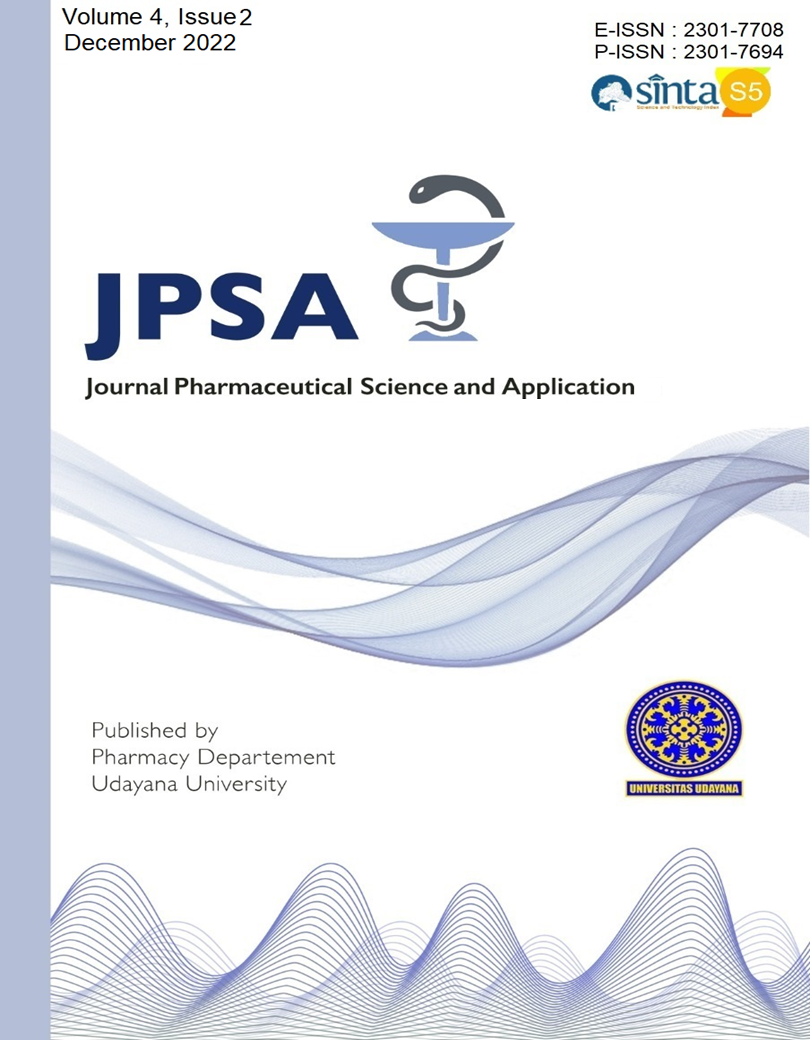ANTIBIOTICS USAGE OVERVIEW IN ORTHOPEDIC SURGERY PATIENTS AT A HOSPITAL IN BALI
Abstract
Backgrounds: Antibiotic resistance can be prevented by controlling the use of antibiotics wisely. Based on WHO recommendations, controlling the use of antibiotics is done by grouping antibiotics with the AWaRe category. Objective: This work aims to present an overview of the use of antibiotics in orthopaedic surgery patients as an effort to monitor the use of antibiotics in a hospital in Bali. Methods: Based on the patient's medical record data, the antibiotics used for orthopaedic surgery were calculated and grouped with the AWaRe classification. Result: Results showed that the most prescribed antibiotic was ceftriaxone (84.74%). There were no antibiotics in the reserve category, but the highest percentage was 94.92% in the watch category, and the access category was 5.08%. Conclusion: There is still non-selective use of antibiotics in this hospital, so in the future, it is necessary to evaluate qualitatively and quantitatively to ensure rational use as well as efforts to prevent the occurrence of antibiotic resistance.
Keywords: Antibiotics; Resistance; AwaRe; Hospital; Bali
Downloads

This work is licensed under a Creative Commons Attribution 4.0 International License.
Authors who publish with this journal agree to the following terms:
Authors retain copyright and grant the journal right of first publication with the work simultaneously licensed under a Creative Commons Attribution License that allows others to share the work with an acknowledgment of the work's authorship and initial publication in this journal.
Authors are able to enter into separate, additional contractual arrangements for the non-exclusive distribution of the journal's published version of the work (e.g., post it to an institutional repository or publish it in a book), with an acknowledgment of its initial publication in this journal.
Authors are permitted and encouraged to post their work online (e.g., in institutional repositories or on their website) prior to and during the submission process, as it can lead to productive exchanges, as well as earlier and greater citation of published work. (See The Effect of Open Access).

This work is licensed under a Creative Commons Attribution 4.0 International License.


 HOME
HOME
















